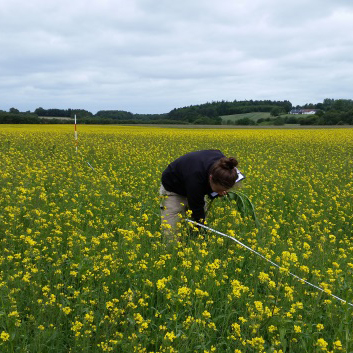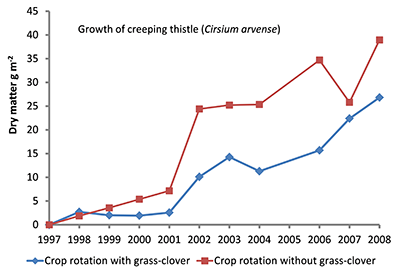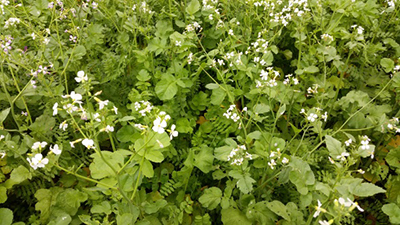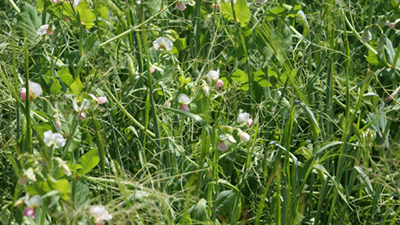Crop diversity prevents serious weed problems
Weed management in organic crop production could benefit from more diversification of today’s cropping systems. However, the potential of diversification needs better documentation and solid suggestions for employment in practise must be identified.

Todays weed flora is a result of the evolution that has taken place since man started to cultivate land for crop production. The weed species we know from arable fields have adapted closely to the crops grown; some species are associated with spring sown crops while others follow the life cycle of autumn sown crops. So the assembly of annual weed species found in the seedbank typically reflect the cropping history of the field.
Summer annual weed species dominate where spring sown crops have been grown frequently while high prevalence of winter annuals reveals a different cropping history with a high proportion of winter crops. Of course, many nuances can be found in between these two extremes and most noxious perennial weed species are generally less determined by the life cycle of annual crops.
Other aspects of crop attributes have significant importance for perennials, among which the crops competitive abilities and the room they leave for physical interventions are probably the most important ones.
Prevention needed
Organic cropping systems with arable crops often suffer from serious weed infestations which together with shortages in nutrient supplies are regarded as main hindrances for increasing crop yields. There is a constant need to look for new ways to manage weed problems because physical methods not always suffice. Cultural and preventive tactics are usually needed and crop diversification is an essential component in this regard. Despite that crop diversification is known as a useful tool for management of weeds, its potential for mitigating weed problems is not fully utilized.
Means of crop diversification
Crop diversification on arable fields can be achieved in different ways. Crop rotation and the sequence in which crops are grown can provide various ‘habitats’ for weed growth, not only by the crops themselves but also by the opportunities for physical control. For example Creeping thistle is better managed in crop rotations where grass-clover for mowing is regularly grown than in rotations without grass-clover.

Table: Growth of creeping thistle (Cirsium arvense) in a crop rotation with and without grass-clover.
Cover crops add further diversity to cropping systems mainly in the periods between main crops. Pertinent choices of cover crops species can suppress the growth of serious perennials.

Suppressive cover crop with winter vetch and fodder radish.
Photo: Bo Melander.
Crop species mixtures, such as cereals + grain legumes, and variety mixtures of cereal species change the growth rate and architecture of crop canopies. Noxious weed species can be better suppressed as compared to sole crops or varieties but without eradicating more beneficial weed species that host organism antagonistic to pests.

Crop species mixture of pea and spring barley.
Photo: Roman Krawczyk.
The Core Organic plus project PRODIVA (Production Diversification Application, coreorganicplus.org/research-projects/prodiva) addresses these aspects of crop diversification and surveys the weed situation in approx. 200 fields with spring cereals. The survey will identify the linkages between weed occurrences and field cropping histories in order to scrutinize how crop diversification has influenced the weed flora.
More about the project
Read the project leaflet